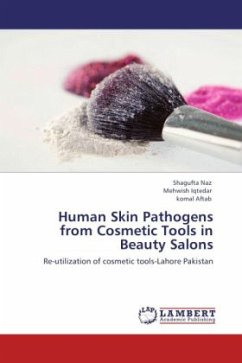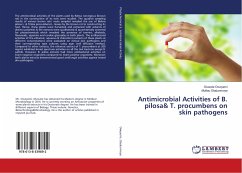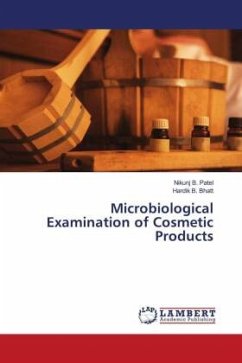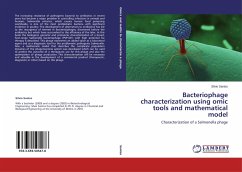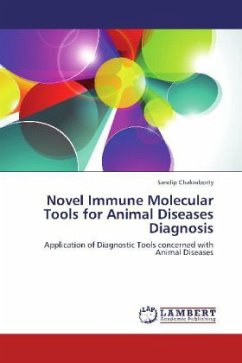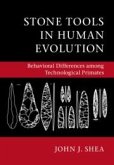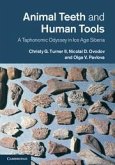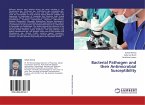With the surprising development across the cosmetic and personal care companies the re-utilization of cosmetic tools is of a common practice. Isolation and detection of human skin pathogens from 100 samples of beauty salon tools i.e., blusher brush, face sponge and wax has been done. All the samples were examined microbiologically for the contamination of Staphylococcus aureus, Pseudomonas aeruginosa, yeast and fungus. It was observed that the percentage of Staphylococcus aureus was higher (100% in sponge, 100% in brush, 88% in wax) in the tools than Pseudomonas aeruginosa (69.6% in sponge, 81.8% in brush and 73.5% in wax), where counts obtained for fungus was 51.5% in sponge, 30.3% in brush and 20.5% in wax. It was observed that the major cause of contamination of saloon tools is repetitive usage on all costumers without considering the hygienic conditions.
Bitte wählen Sie Ihr Anliegen aus.
Rechnungen
Retourenschein anfordern
Bestellstatus
Storno

